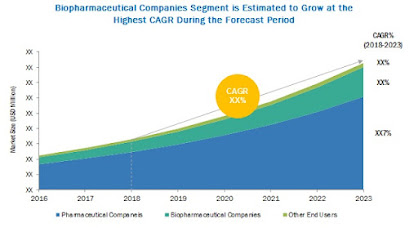As Genome Sequencing heads to $100 Direct-to-Consumer, a potential opportunity worth $50 Bn is expected to open up, leading to a million terabytes of genome data by 2025.
The genome sequencing market will reach $25 Bn by 2026, further intensified by COVID-19, and oncology and rare disease diagnostics coupled with pan genome studies. Adjacent markets of data storage, high performance computing (HPC), lab automation, and AI are anticipated to see unlocking of a further $20 Bn.
Download PDF Brochure: https://www.marketsandmarkets.com/practices/pdfdownload.asp
According to MarketsandMarkets analysis,
- $50 Bn of potential opportunity is opening up as genome sequencing heads to $100 direct-to-consumer, which was one of the most talked-about trends in 2021.
- The global genomic studies and projects comprising advanced genetic sequencing is expected to drive better clinical decision-making in the coming years, presenting lucrative growth opportunities to NGS companies.
- Additionally, the life sciences market is witnessing an increased adoption of AI, personalized healthcare, gene editing, etc., which is likely to disrupt the demand for genomics, in turn impacting the growth of the market.
- The increasing demand for sequencing and bioinformatics in diagnostics is predicted to disrupt the demand for IVD over the next few years.
MarketsandMarkets is focused on high-growth, niche markets, such as AI in genomics, spatial genomics & transcriptomics, liquid biopsy, single-cell analysis, and related markets, providing a comprehensive understanding of the entire genomics ecosystem through the World’s First Market Intelligence Cloud, ‘KnowledgeStore’. It helps find blind spots in clients’ revenue decisions because of interconnections and unknowns that impacting clients and their client’s clients.
For more details, please visit: https://www.marketsandmarkets.com/practices/genomics-new.asp
Press Release: https://www.marketsandmarkets.com/PressReleases/genomics.asp






